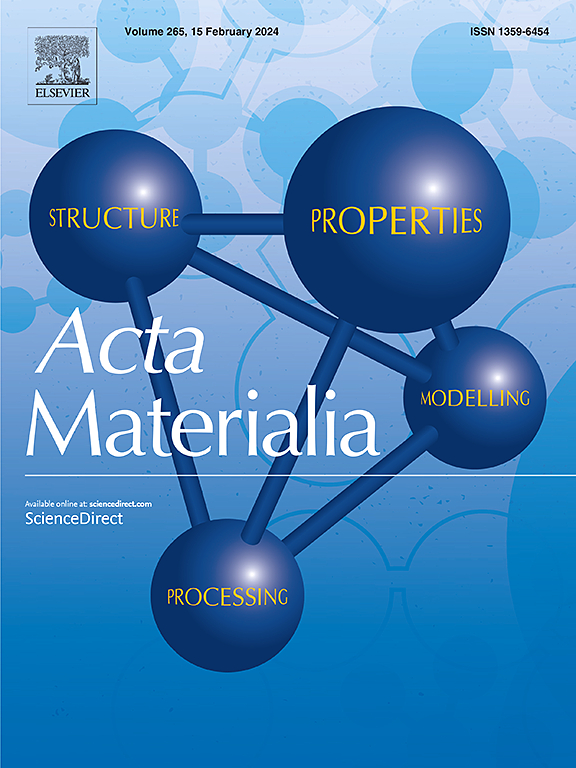Liquid-liquid phase transition and chemical phase separation in Cu-Zr-Al-Y bulk glass-forming supercooled liquid
IF 8.3
1区 材料科学
Q1 MATERIALS SCIENCE, MULTIDISCIPLINARY
引用次数: 0
Abstract
Anomalous exothermic peaks (AEPs) before crystallization in metallic supercooled liquids are commonly attributed to chemical phase separation (CPS) or structural changes due to polyamorphic liquid-liquid phase transition (LLPT). In this work, we present experimental evidence of the simultaneous occurrence of LLPT and CPS during the anomalous exothermic reaction in a supercooled Cu-Zr-Al-Y liquid. The CPS results from the positive enthalpy of mixing between Y and Zr, while LLPT, characterized by medium-range structural ordering, originates from the two-phase field (fragile and strong phases) centered around Cu50Zr50 in the Cu-Zr system. These two aspects interact with each other and are considered to be a key factor in stabilizing the supercooled liquid against crystallization. To describe the structural and chemical evolutions in the supercooled liquid, we propose schematic Gibbs free energy surfaces for the (Cu, Al)-(Zr, Al)-Y pseudo-ternary system that incorporate both the two-phase field of LLPT and the local maximum of the CPS in the Y direction. The results of this work not only enrich our understanding of anomalous thermophysical signals in the supercooled liquid but also offer insights into the development of bulk metallic glasses with superior glass-forming ability and thermal stability.

Cu-Zr-Al-Y块状玻璃形成过冷液的液-液相变与化学相分离
金属过冷液体结晶前的异常放热峰(AEPs)通常归因于化学相分离(CPS)或多晶液-液相变(LLPT)引起的结构变化。在这项工作中,我们提出了在过冷Cu-Zr-Al-Y液体的异常放热反应中LLPT和CPS同时发生的实验证据。CPS来源于Y和Zr的正混合焓,而LLPT来源于Cu-Zr体系中以Cu50Zr50为中心的两相场(脆弱相和强相),具有中等结构有序的特征。这两个方面相互作用,被认为是稳定过冷液体不结晶的关键因素。为了描述过冷液体中的结构和化学演变,我们提出了包含LLPT两相场和Y方向CPS局部最大值的(Cu, Al)-(Zr, Al)-Y伪三元体系的吉布斯自由能曲面示意图。这项工作的结果不仅丰富了我们对过冷液体中异常热物理信号的理解,而且为开发具有优异玻璃形成能力和热稳定性的大块金属玻璃提供了见解。
本文章由计算机程序翻译,如有差异,请以英文原文为准。
求助全文
约1分钟内获得全文
求助全文
来源期刊

Acta Materialia
工程技术-材料科学:综合
CiteScore
16.10
自引率
8.50%
发文量
801
审稿时长
53 days
期刊介绍:
Acta Materialia serves as a platform for publishing full-length, original papers and commissioned overviews that contribute to a profound understanding of the correlation between the processing, structure, and properties of inorganic materials. The journal seeks papers with high impact potential or those that significantly propel the field forward. The scope includes the atomic and molecular arrangements, chemical and electronic structures, and microstructure of materials, focusing on their mechanical or functional behavior across all length scales, including nanostructures.
 求助内容:
求助内容: 应助结果提醒方式:
应助结果提醒方式:


